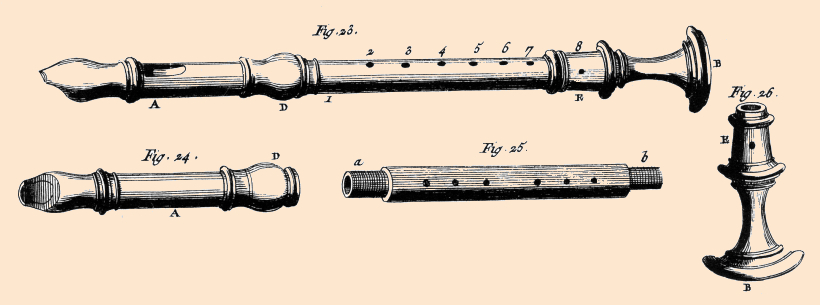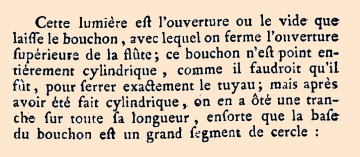PHILIPPE BOLTON
HANDMADE RECORDERS & FLAGEOLETS
THE RECORDER IN DIDEROT & D'ALEMBERT'S ENCYCLOPEDIE

| In this drawing we can see the recorder as it was at the end of the baroque period (three-part construction, single holes). However, the turning seems a little exaggerated, particularly on the foot joint, and the shape of the windway is erroneous in the view of the head joint, fig. 24. The mistake is confirmed in the text. A recorder block is not made using the method described here. |

|
This windway is the gap left by the block that closes the top end of of the recorder. This block is not completely cylindrical as it should be to fit exactly in the bore, but after it has been made cylindrical a slice of wood is removed along its whole length in such a way that the base of the block is a large segment of a circle.
ANOTHER INTERESTING RECORDER IN THE ENCYCLOPEDIE

|
This instrument is not a flute, but a recorder, made in four pieces, which can be played by placing the lips around the hole (a) and blowing directly into it, while holding the instrument on the side like a flute. The windway in the head joint sends the air stream towards the labium (b). The text specifies that the fingerings are the same as on a recorder, but indicates a little further that the fourth part DE is equipped with a key opened by the little finger of the right hand, as on the flute, which suggests that it does in fact have flute fingerings , with a d# key (8) and an octave hole (1) opened by pressing the upper key. The picture seems to confirm this point. The instrument may have been an attempt to keep the recorder "alive" at a time when it was going out of fashion, just like Thomas Stanesby Junior's True Concert Flute. The article was published in the second half of the 18th century. |